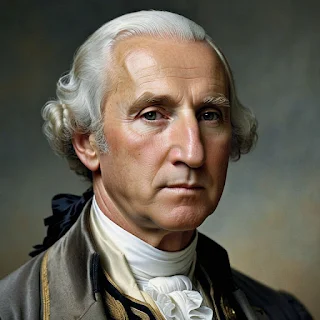The American Revolution: A Comprehensive Overview
Introduction
The American Revolution was a pivotal moment in history that reshaped the future of what would become the United States. This conflict, which took place from 1775 to 1783, saw the thirteen American colonies break free from British rule. The Revolution is not just a tale of battles and treaties; it embodies the struggle for freedom, the quest for identity, and the birth of a nation.
Background of the American Revolution
Colonial America
Before the Revolution, America was a patchwork of colonies under British control. Each colony had its unique character, economy, and society, but all shared a growing sense of dissatisfaction with British rule.
British Colonial Policies
The British government imposed various policies and taxes on the colonies, which were seen as unfair and oppressive. These policies were designed to benefit Britain at the expense of the colonies, leading to increasing resentment and calls for change.
Causes of the American Revolution
Taxation Without Representation
One of the primary grievances was "taxation without representation." Colonists believed it was unjust to be taxed by a Parliament in which they had no representation. This slogan became a rallying cry for the Revolution.
The Stamp Act and Townshend Acts
The Stamp Act of 1765 and the Townshend Acts of 1767 imposed direct taxes on the colonies. The colonists reacted with protests, boycotts, and in some cases, violent resistance, setting the stage for further conflict.
Boston Massacre and Boston Tea Party
Events like the Boston Massacre in 1770, where British soldiers killed five colonists, and the Boston Tea Party in 1773, where colonists dumped British tea into Boston Harbor, fueled revolutionary fervor and united the colonies against British tyranny.
Key Events Leading to the Revolution
First Continental Congress
In 1774, the First Continental Congress met to address colonial grievances. This assembly of delegates from the colonies marked a significant step towards unity and collective action.
The Battles of Lexington and Concord
The battles of Lexington and Concord in April 1775 were the first military engagements of the Revolution. The "shot heard round the world" signaled the start of open conflict between Britain and the colonies.
Declaration of Independence
Drafting the Declaration
The Declaration of Independence, drafted by Thomas Jefferson and adopted on July 4, 1776, was a bold statement of the colonies' intention to break free from British rule. It articulated the principles of individual liberty and government by consent.
Key Figures Involved
Prominent figures like Thomas Jefferson, John Adams, Benjamin Franklin, and others played crucial roles in the drafting and promotion of the Declaration.
Impact of the Declaration
The Declaration of Independence galvanized support for the Revolution and articulated a vision of a new nation based on democratic principles and individual rights.
Major Battles of the American Revolution
Battle of Bunker Hill
The Battle of Bunker Hill in June 1775 demonstrated the resolve and strength of the colonial forces, despite ultimately being a British victory.
Siege of Yorktown
The Siege of Yorktown in 1781 was a decisive victory for the American and French forces, leading to the surrender of British General Cornwallis and effectively ending major combat operations.
Battle of Saratoga
The Battle of Saratoga in 1777 was a turning point in the war, convincing France to join the conflict on the side of the colonies, and providing crucial military support.
Key Figures of the American Revolution
George Washington
George Washington, as the commander-in-chief of the Continental Army, was instrumental in leading the colonies to victory. His leadership and strategic acumen were vital to the American cause.
Thomas Jefferson
Thomas Jefferson's contributions as a political thinker and the principal author of the Declaration of Independence were fundamental to the ideological foundation of the Revolution.
Benjamin Franklin
Benjamin Franklin's diplomatic efforts, particularly in securing French support, were crucial to the success of the American Revolution.
John Adams
John Adams played a key role in advocating for independence and shaping the new nation's government.
Role of Women in the Revolution
Contributions of Women
Women played significant roles in the Revolution, from managing households and businesses in the absence of men to providing supplies and even participating in combat.
Notable Female Figures
Figures like Abigail Adams and Molly Pitcher became symbols of women's contributions and the broader fight for independence.
International Involvement
French Support
French military and financial aid were crucial to the American victory. The alliance with France provided much-needed resources and support.
Role of Other Countries
Other countries, such as Spain and the Netherlands, also provided support, either directly or indirectly, to the American cause.
Life During the American Revolution
Daily Life of Soldiers
Life for soldiers during the Revolution was harsh, with limited supplies, challenging conditions, and the constant threat of battle.
Impact on Civilians
Civilians faced disruption, economic hardship, and the constant presence of war. Loyalists and Patriots often found themselves in conflict within their communities.
Treaty of Paris 1783
Terms of the Treaty
The Treaty of Paris, signed in 1783, officially ended the war. Britain recognized American independence and ceded significant territory to the new nation.
Significance of the Treaty
The treaty marked the beginning of a new era for the United States, establishing its sovereignty and setting the stage for westward expansion.
Aftermath of the Revolution
Political Changes
The Revolution led to the establishment of a new government based on democratic principles, with the creation of the Constitution and the Bill of Rights.
Economic Impact
The war had significant economic impacts, including debt and the need for rebuilding, but also opened new opportunities for trade and growth.
Social Changes
The Revolution brought social changes, including increased calls for equality and the eventual abolition of slavery.
Legacy of the American Revolution
Influence on Other Revolutions
The American Revolution inspired other movements for independence and democratic reforms around the world, including the French Revolution.
Long-term Impact on the United States
The ideals and principles established during the Revolution continue to shape American identity, politics, and society.
Conclusion
The American Revolution was a defining moment in history, representing the triumph of a people's desire for freedom and self-determination. It laid the foundation for a nation built on democratic principles and continues to inspire struggles for liberty worldwide.
FAQs
What were the main causes of the American Revolution?
The main causes included taxation without representation, oppressive British policies, and events like the Boston Massacre and Boston Tea Party.
Who were the key figures in the American Revolution?
Key figures included George Washington, Thomas Jefferson, Benjamin Franklin, and John Adams.
How did the American Revolution impact the world?
The Revolution inspired other independence movements and democratic reforms globally, including the French Revolution.
What was the significance of the Treaty of Paris 1783?
The Treaty of Paris 1783 officially ended the war, recognized American independence, and ceded territory to the United States.
How did the American Revolution change American society?
The Revolution led to political, economic, and social changes, including the establishment of democratic governance, economic growth, and increased calls for equality.



